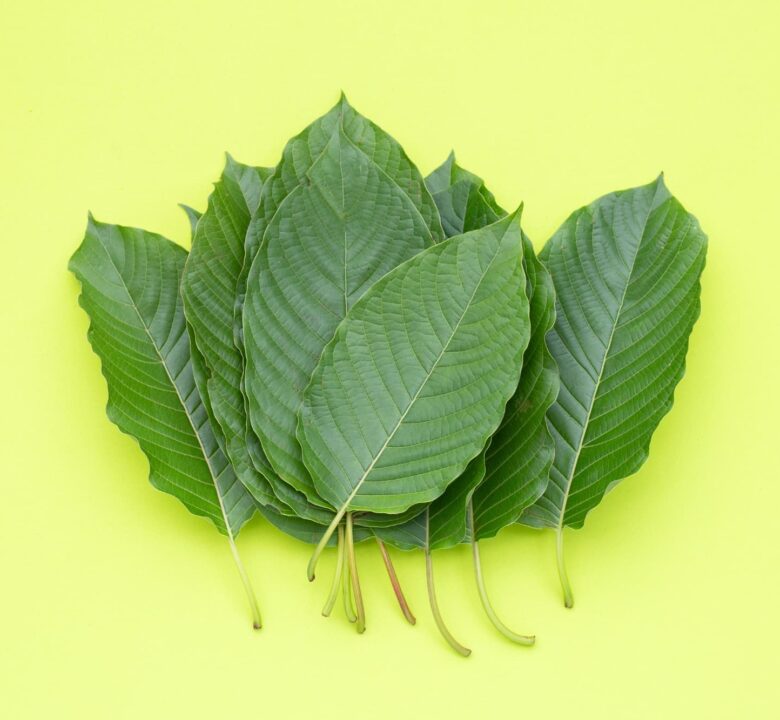
Kratom and Vitamin Deficiencies: Is There a Link Between the Two?
July 4, 2024
Speciociliatine: All About This Unique Kratom Alkaloid
July 4, 2024The natural botanical kratom, also known as Mitragyna speciosa), has become extremely popular throughout the U.S. with people looking for a natural experience. Kratom products vary in form and quality, and there’s still much quantifiable scientific and clinical evidence needed before its short-term and long-term effects are known.
However, extensive research into both is ongoing and can provide general information which can help kratom users make informed choices. Individual kratom experiences may vary, but understanding both the short and long-term potential benefits and side effects of the botanical can guide the kratom journey.
Let’s take a look at kratom and its uses, pharmacology, and the research on short and long-term effects on consumers.
A History of Kratom
Most kratom resources include a paragraph or two about kratom’s origins. However, a deeper look at how kratom was used historically, why kratom products have become popular, and why there’s a growing international advocacy for the botanical’s availability can educate us on its modern relevance.
The kratom tree is native to Southeast Asian countries such as Thailand and Malaysia. A member of the coffee family, this tropical tree grows large leaves that have been harvested and used for consumption for centuries. Native cultures ground the leaves into powder, chewed them, or brewed them into teas.
The local people believed that kratom leaves held naturally relieving and energizing properties. Thus, beginning in the 19th century, many locals began to use kratom leaves to act as anesthetics, and to help them relieve opium withdrawal symptoms. (1)
Historically, kratom was also used to combat fatigue and increase work productivity. (2)
After its introduction to the western world, kratom has been used by enthusiasts for many of the same purported results.
Scientists have discovered that kratom leaves contain over 40 identifiable alkaloids, including mitragynine and 7-hydroxymitragynine, which may interact with the body’s natural opioid receptors and produce soothing results. Although these alkaloids have been identified, researchers are still exploring exactly how their presence in kratom impacts users.

Why people take kratom today
Although kratom is not a magical cure-all for illnesses or chronic conditions, many people consider it a safe, natural alternative to illegal drugs, prescribed medicines, and over-the-counter pain relief.
The botanical is not yet approved by the FDA (Food and Drug Administration) for any certified use, and kratom products from less-than-reputable brands that provide false medical claims and don’t include transparent labeling should be avoided. However, many people who have taken kratom report significantly positive results.
Kratom enthusiasts may take kratom for the following reasons, but it’s important to remember that universal results aren’t guaranteed and beneficial claims cannot yet be proven:
- Comfort
- Energy boosts
- Fatigue reduction
- Mental focus support
- Mood enhancement
- Relaxation
- Relief
- Uplifting experiences
Pharmacology of kratom
The pharmacology of kratom is unique as the botanical contains multiple naturally-occurring alkaloids and compounds. Thus, although the botanical is extensively studied, the full effects and interactions of the alkaloids it contains are not yet fully known.
However, according to an article published in PubMed from the National Library of Medicine, a publishing arm of the National Institutes of Health (NIH), the two most prevalent alkaloids in kratom, mitragynine and 7-hydroxymitragynine, can both target opioid receptors. (3)
Although the results are far less significant than stimulants or opioids, the kratom user may experience similar energizing or relieving effects (respectively).

Research on short-term kratom effects
Ongoing scientific research on kratom has found that many users experience similar results and find that pure kratom products work as intended. In other words, products marketed to provide an energizing effect, along with products intended to produce soothing results, do so.
Positive effects
Low doses of kratom may produce the desired effect of increased energy and supported mental focus. Moderate to higher doses of kratom might prove calming, mood-balancing, and relaxing. (4)
Although the clinical implications of short-term kratom use are still uncertain, it does not appear that short-term effects will include negative or adverse results for users.
Negative effects
Nevertheless, research has also found that short-term effects can vary based on the kratom products used (powders, capsules, gummies, or liquid extracts), the medical history of an individual user, and the serving size taken.
Most kratom users who take small doses of the botanical on a full stomach will not experience negative effects. However, an individual user may still experience negative short-term results.(5)
The potential negative effects of short-term use might include:
- Anxiety
- Constipation
- Dehydration
- Dry mouth
- Nausea
- Rapid heartbeat
The impact of long-term kratom use
The long-term effects of kratom use are still being tested, and there is no federally approved medical use for the botanical. However, we can look to studies from credible sources to get a better understanding of how kratom use may have a long-term impact.
According to a user survey of over 2,700 kratom users from Johns Hopkins Medicine, long-term effects of kratom use may be therapeutic and hold minimal risk. (6) The medical school asked kratom users from all walks of life about the long-term effects they’ve experienced, and published the following results:
- 19% said they experienced mild side effects
- 87% of those using it to help mitigate opioid withdrawal symptoms reported positive results
- Many found it effective in helping reduce anxiety, depression, and insomnia
Conversely, research published by PubMed finds that kratom can have detrimental long-term effects. (7) Scientists studied kratom users in Malaysia and Thailand and found that they exhibited long-term effects from use.
When used over an extended period of time, the researchers concluded that kratom can lead to:
- Fatigue
- Insomnia
- Hyperpigmentation
- Loss of Appetite
- Muscle tremors
- Seizures
- Unanticipated weight loss
As with any product made for consumption, results may vary and it’s vital to proceed with caution and knowledge. However, avoiding misuse or overuse of kratom may help to mitigate any negative long-term effects.
Are kratom fears warranted?
Many of the fears surrounding kratom are based on the lack of federal regulations protecting the safety of kratom users and ensuring the purity and quality of kratom products. However, there is a Federal Kratom Consumer Protection Act (KCPA) that may eventually pass both chambers of Congress.
Similarly, many states have enacted laws that regulate kratom distribution, sales, and consumption that may benefit consumers. Education can go a long way to ensure that public knowledge of kratom is accessible, and to help enthusiasts avoid misuse of kratom products.
Funded research could also help to find definitive proof of kratom’s benefits or short-term and long-term side effects.
Kratom Research Institute: Who we are
The Kratom Research Institute is committed to sharing the truth about kratom and giving both the kratom-curious and seasoned users access to educational resources. By exploring all perspectives on kratom and how it may impact the user, we’re passionate about equipping our readers with information to make an informed choice about kratom use.
Kratom use has many potential benefits, but it’s vital to understand the risks as well.
The Kratom Research Institute includes health experts, industry professionals, and consumers dedicated to discovering the truth about kratom and sharing facts with transparency.
From the possible short-term and long-term effects of the botanical to the latest scientific studies, we’re here to share all kratom-related news with you.
Sources
- Arenberg, Egon (Mitra Science). “Unraveling Kratom: Historical Roots, Regulations & Medical Potential.” Acslab.com. Published 29 June 2023.
- Cinosi, Eduardo. Martinotti, Giovanni. et. al.“Following “the Roots” of Kratom (Mitragyna speciosa): The Evolution of an Enhancer from a Traditional Use to Increase Work and Productivity in Southeast Asia to a Recreational Psychoactive Drug in Western Countries.” PubMed. National Library of Medicine, National Institutes of Health. Published online 10 November 2015.
- Eastlack, Stephen C. Cornett, Elyse M. Kaye, Alan D. “Kratom—Pharmacology, Clinical Implications, and Outlook: A Comprehensive Review.” PubMed. National Library of Medicine, National Institutes of Health. Published online 28 January 2020.
- Prevete, Elisabeth. Kuypers, Kim Paula Colette. et. al. “Clinical Implications of Kratom (Mitragyna speciosa) Use: a Literature Review.” Springer Link. Published 12 May 2023.
- Smith, Matt. “What Is Kratom?” WebMd.com. Published 15 May 2023.
- Johns Hopkins Medicine. “Natural Herb Kratom May Have Therapeutic Effects And Relatively Low Potential For Abuse Or Harm, According To A User Survey.” Hopkinsmedicine.org. Published 3 February 2020.
- Singh, Darshan. Mueller, Christian P. Vicknasingam, Balasingam K. “Kratom (Mitragyna speciosa) dependence, withdrawal symptoms and craving in regular users.” PubMed. National Library of Medicine, National Institutes of Health. Published online 22 March 2014.




